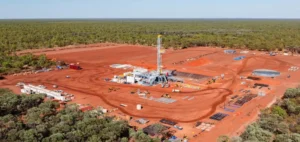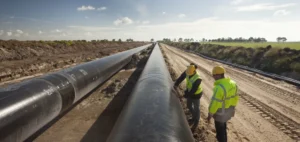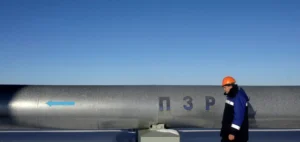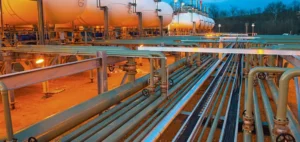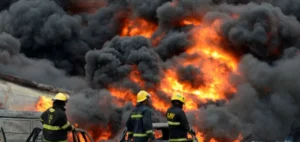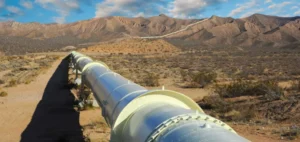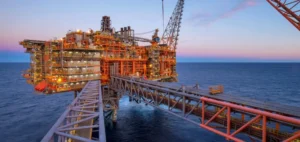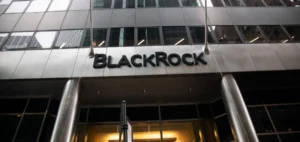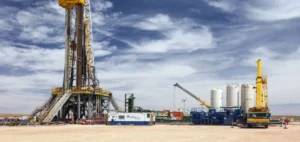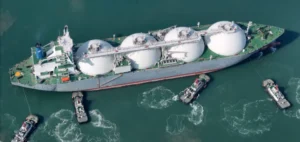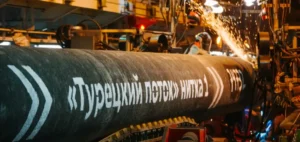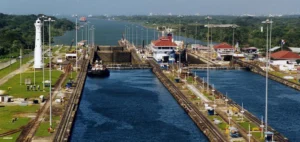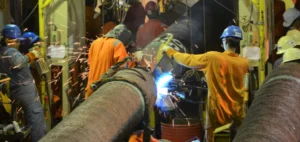“They take our lives”. On the doorstep of his Louisiana home, Travis Dardar points to a massive gas export terminal… and the land that could soon be home to a second one, forcing him to leave his home and his fishing business.
This project is “much worse than a hurricane”, after which, at least, “we can rebuild”, says the man who sees himself as a collateral victim of the development of the American gas industry, which the Russian gas crisis has made paramount. “If it’s built, there’s no going back.”
In this coastal region between Texas and Louisiana, the recent proliferation of liquefied natural gas (LNG) export terminal projects, huge buildings set on concrete plateaus that are gradually nibbling away at natural areas, is irritating the inhabitants, who consider them too polluting.
The proposed terminal near the home of Travis Dardar and his wife Nicole would be only a few hundred yards from their home. This would leave them with no choice but to pack up – and hope that their land would be bought back at a reasonable price.
Another one is planned at the place where they fish. The Dardar couple may therefore also have to abandon their shrimp and oyster fishing activity in the area, the ultimate uprooting. “We don’t know what we’re going to do next. We know one thing: we can’t live here,” laments Travis Dardar.
– Ukraine –
Last March, a few weeks after the start of the Russian invasion of Ukraine, President Joe Biden pledged to increase LNG deliveries to Europe, which is too dependent on Russian gas.
44.6 billion cubic meters have already been exported there in 2022, compared to 26 in 2020, reports the LNG Center, which brings together companies in the sector.
The United States has become the world’s largest exporter of LNG, an industry that can only be attracted to the Gulf of Mexico, with its infrastructure and strategic location.
The area alone has 5 of the 7 active U.S. export terminals and 22 of the 24 projects submitted to the authorities.
An activity that, in turn, brings “many jobs”, promises Charlie Riedl, executive director of the LNG Center.
According to him, as long as the terminal construction projects meet the environmental criteria, the government must “authorize them without delay”.
– Noise, light and pollution –
But these Louisiana and Texas coasts are “sacrificed,” assures John Allaire, another resident.
“You have noise, light, air pollution and dozens of acres of concrete swamps,” he laments, sitting in his boat, pointing to the new LNG export terminal near his home.
Dejected, John Allaire watches the waves caused by the huge LNG tankers erode the coastline and the dredging sludge that covers his beach.
He is also concerned about the impact on wildlife. The planned project on the land along his property is located on a wetland that is home to an endangered bird species, the black rail.
“It’s horrible to see this administration (Biden, editor’s note) (…) who said there was a climate emergency, approving these kinds of facilities,” says Kelsey Crane, public policy officer at Earthworks.
– Cracks –
Across the Sabine River, the Texas city of Port Arthur already has numerous petrochemical facilities.
Near the Cheniere Energy terminal – which last year paid nearly $1.5 million in fines for cracks in its tanks – activist John Beard guides a “toxic tour” of the area, along with environmental groups.
In June, an explosion caused the temporary closure of the Freeport LNG terminal further south, reminding residents of the immediate risks posed by this unique neighborhood.
But John Beard, head of the Port Arthur Community Action Network, also denounces the long-term effects on the health of largely minority residents.
In Port Arthur, the population is predominantly African-American or Hispanic, and a quarter of them live below the poverty line, according to the U.S. Census Bureau.
In the county, the cancer death rate is 25% higher than the rest of the state, according to the Texas Cancer Registry.
John Beard believes that the industrialists did not choose this area by chance: “they take the path of least resistance, that of the poor, of those who do not have access to lawyers, who do not have education or knowledge”.





